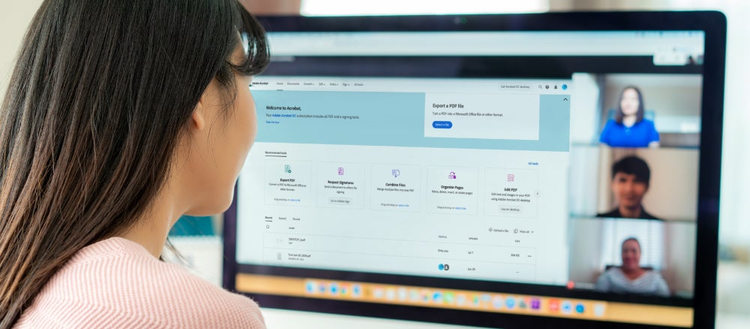Adobe/Forrester Consulting: Digital documents define the core of remote work today and tomorrow

To say the way business is done has changed this year is an understatement. While the shift from paper to digital has slowly been happening over the past few years, 2020 has put it into high gear as employees and customers adjust to the new realities of virtual work, stay productive, and meet critical legal and security requirements.
To better understand how digital document processes have evolved this year, Adobe commissioned Forrester Consulting to interview 450 senior IT and business decision makers. The report uncovered the following findings, among many others.
Adopting digital document processes supports business resiliency
Remote work has created a host of new challenges around how people work with documents. According to the Adobe/Forrester research, 97 percent of organizations with minimal digital document processes reported a negative impact on employee productivity – more than five times the number of digitally advanced organizations that said the same.
For example, when the State of Utah experienced a 5.7-magnitude earthquake in mid-March – amid the pandemic, no less – it immediately encouraged its teams across the state to adopt Adobe Sign to effectively handle high volumes of contracts and other approval processes for emergency response plans. Residents heard back in hours instead of days or weeks, which created a new normal for government resiliency.
Digital document solutions are the currency of business productivity
Nearly a third of organizations have not yet provided tools to assist or improve virtual work, but 60 percent of respondents say they plan to provide such tools within the next 12 months, the Adobe/Forrester research found. Spending on digital document processes and tools will increase by 55 percent, on average, over that period, the research predicts.
Adopting digital document solutions will remain crucial throughout the COVID-19 recovery phase and beyond. In fact, 71 percent of organizations that considered digital document solutions mere “nice-to-have” operational tools before the pandemic are now planning to retain them as standard post-pandemic protocols.
For example, the City of Seattle saw its e-signature transactions increase substantially in the early months of the pandemic, helping it deliver timely, transparent, and secure communications. As Seattle CTO Saad Bashir told us, “This catastrophe will change the way we work and innovate going forward.”
Digitizing document processes deliver secure, efficient experiences that paper can’t
An impressive 82 percent of organizations that use digital documents exclusively report that digital processes and tools have ensured their businesses will keep going, according to the Adobe/Forrester research. In sharp contrast, organizations with no digital document processes are reporting 10 times more at-risk customers and twice as much at-risk revenue.
Case in point: At the start of the pandemic, TSB Bank (UK) processed over 80,000 online interactions using Adobe Sign, which would have equated to as many as 15,000 in-branch, face-to-face visits. It effectively negated the need for physical, in-branch visits and reduced customer call volume.
Digital document processes reimagine how work gets done in the future
Nearly two-thirds (63 percent) of organizations report that digital document processes enable them to better serve their customers and meet their expectations. And on the employee experience side, 66 percent of employees say they also want more digital alternatives to perform their day-to-day work – both today and going forward.
It’s clear that adopting digital processes will continue to speed up, especially with the continued uncertainty of when we can safely come back to the offices. Even as we get closer to that light at the end of the tunnel, the research suggests that companies see digitization as the standard moving forward to delight their customers and build a modern workplace.
Check out the infographic based on the study below, or click here to get the report.
